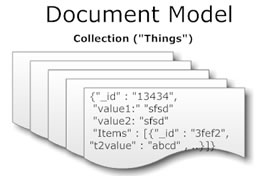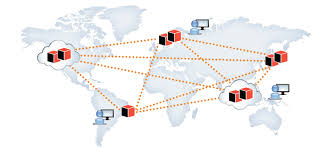Different Types of Database
Key Difference: A database is basically a repository of data which is devised in order to support efficient data storage. In addition to data storage, a database also assists in retrieval and maintenance of data stored in it. There are many different types of databases.
A database holds data and assists in making it reachable through various ways. A database is known for its regular and systematically defined structure. Some important characteristics of databases are –
- Concurrent use – Many users can access the database concurrently
- Structured and described data – In addition to data, it also consists of complete definition and description of data
- Separation of Data and Applications – Due to this feature it is not required for application software to known about the physical data storage.
- Data Integrity – Data remains protected from the unauthorized access and changes
- Transactions – It refers to the features which maintains the atomicity; which means a consistent state.
- Data Persistence – It refers to the durability of the data which must not be dependent on any of the system features
Generally, databases can be categorized on the basis of number of users, location, form of data saved in it, etc. Generally, all of the databases fall in one of these types –
 Document Oriented Database – This database is free from any type of strict schema. It does not store data in the form of data table, but in the form of text records. This type of database is suitable for storing dynamic data. CouchDB and RavenDB are examples of document databases. It is useful for an application which is document-based. Documents are encoded using some standard formats.
Document Oriented Database – This database is free from any type of strict schema. It does not store data in the form of data table, but in the form of text records. This type of database is suitable for storing dynamic data. CouchDB and RavenDB are examples of document databases. It is useful for an application which is document-based. Documents are encoded using some standard formats.
 Embedded Database – An embedded database runs within an application, and therefore it does not run as a separate application. Unlike general purpose databases, this database is embedded as in line code or linked library. It saves time wasted on issues related to installations or maintenance. These types of databases are generally found in the set-top boxes, mobile phones, etc. RDM server and RDM Embedded are examples of these types of databases.
Embedded Database – An embedded database runs within an application, and therefore it does not run as a separate application. Unlike general purpose databases, this database is embedded as in line code or linked library. It saves time wasted on issues related to installations or maintenance. These types of databases are generally found in the set-top boxes, mobile phones, etc. RDM server and RDM Embedded are examples of these types of databases.
 Graph Database – It is based on the relationship of resources with each other, and no particular resourse has any essential importance on the other. These types of graphs help in storing data for a dynamic schema. It provides index free adjancy. In this graph database, each vertex works as a mini index for its adjacent elements. Infogrid type of graph database should be preferred for model flexibility.
Graph Database – It is based on the relationship of resources with each other, and no particular resourse has any essential importance on the other. These types of graphs help in storing data for a dynamic schema. It provides index free adjancy. In this graph database, each vertex works as a mini index for its adjacent elements. Infogrid type of graph database should be preferred for model flexibility.
 Hypertext Database – These types of databases are used for organizing a large sum of dissimilar information. The type of information is not devised for carrying out numerical analysis. An object is linked with any other object in a hypertext type of database. This kind of database system was invented by Ted Nelson. They are preferred for maintaining online encyclopedias. Unlike traditional databases, it has no regular structure, and therefore the user can reach to the desired information through different ways.
Hypertext Database – These types of databases are used for organizing a large sum of dissimilar information. The type of information is not devised for carrying out numerical analysis. An object is linked with any other object in a hypertext type of database. This kind of database system was invented by Ted Nelson. They are preferred for maintaining online encyclopedias. Unlike traditional databases, it has no regular structure, and therefore the user can reach to the desired information through different ways.
 Operational Database – It contains data related to the operations going on in an organization or enterprise. Some of the main information it contains are regarding information of employees, data describing transactions, etc. This type of database is updated regularly. It works on the same approach as OLTP. The focus of this database is to record current data. It is often differentiated with the data warehouse.
Operational Database – It contains data related to the operations going on in an organization or enterprise. Some of the main information it contains are regarding information of employees, data describing transactions, etc. This type of database is updated regularly. It works on the same approach as OLTP. The focus of this database is to record current data. It is often differentiated with the data warehouse.
 Distributed Database - It consists of a set of databases which are located on different computers, but all these data bases work as one database logically. Therefore, the data can ibe accessed and modified simultaneously with the help of a network. It is controlled by a local DBMS. It is important to maintain consistency while dealing with this type of arrangement.
Distributed Database - It consists of a set of databases which are located on different computers, but all these data bases work as one database logically. Therefore, the data can ibe accessed and modified simultaneously with the help of a network. It is controlled by a local DBMS. It is important to maintain consistency while dealing with this type of arrangement.
 Flat-File Database – These are data files in which records hold no structured relationship. Additional information is often required for understanding or interpreting these files. In simple language, if we have one table in a database, it will be referred to as a flat file database. It is useful for storing a small amount of records. A spreadsheet application like Excel works as a flat file database.
Flat-File Database – These are data files in which records hold no structured relationship. Additional information is often required for understanding or interpreting these files. In simple language, if we have one table in a database, it will be referred to as a flat file database. It is useful for storing a small amount of records. A spreadsheet application like Excel works as a flat file database.
Image Courtesy: aaronstannard.com, codeproject.com, linkeddatatools.com, paul.luon.net, bi-insider.com, transmediacoalition.com, colorado.edu









Add new comment